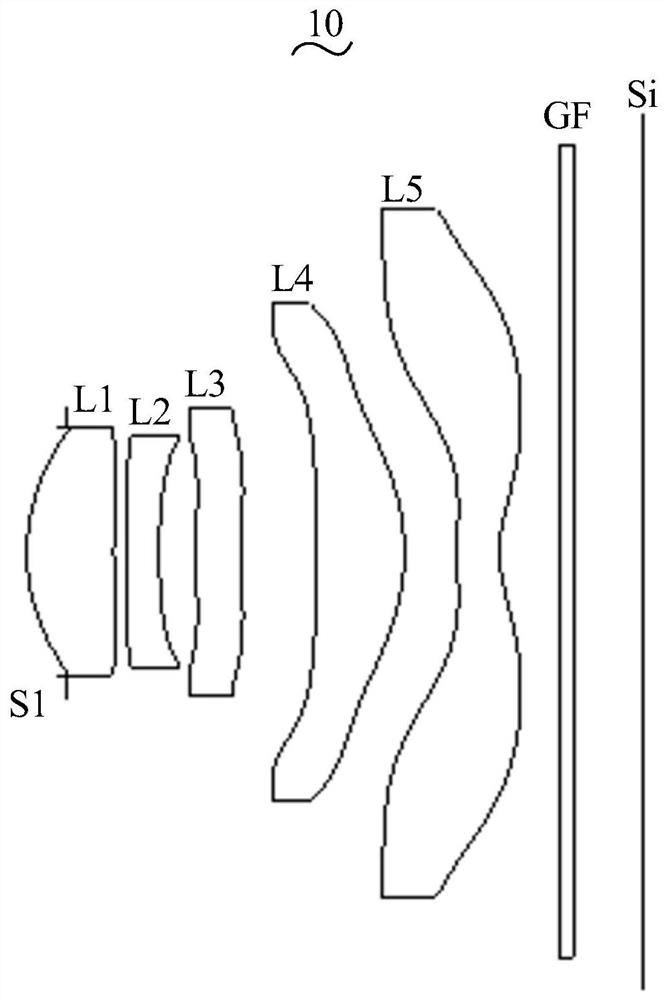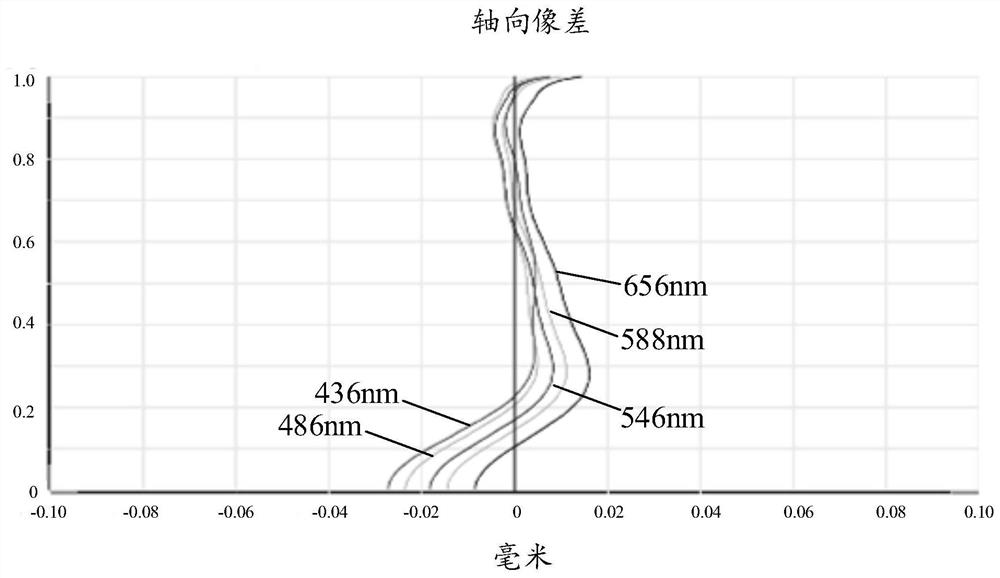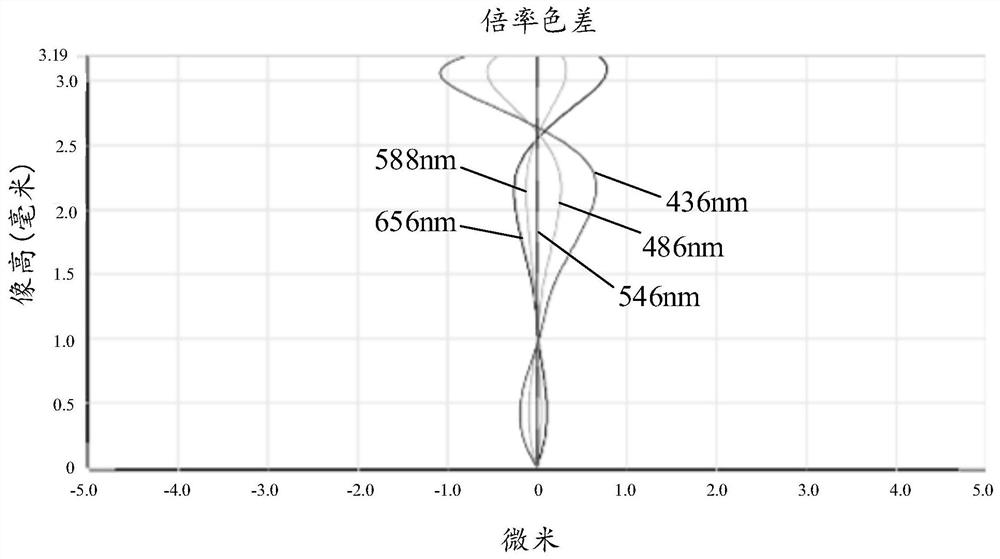Camera Optical Lens
An optical lens and lens technology, applied in the field of optical lenses, can solve the problems of insufficient wide-angle and ultra-thin, achieve the effects of improving imaging quality, reducing aberration, and satisfying wide-angle and ultra-thin
- Summary
- Abstract
- Description
- Claims
- Application Information
AI Technical Summary
Problems solved by technology
Method used
Image
Examples
Embodiment approach 1
[0043] Please also refer to Figure 1 to Figure 4 , the present invention provides the imaging optical lens 10 of Embodiment 1. exist figure 1 Among them, the left side is the object side, and the right side is the image side. The imaging optical lens 10 mainly includes five lenses arranged coaxially, and the first lens L1, the second lens L2, and the third lens L3 are sequentially arranged from the object side to the image side. , the fourth lens L4 and the fifth lens L5. An aperture S1 is also provided on the object side of the first lens L1, and a glass plate GF is provided between the fifth lens L5 and the image plane Si. The glass plate GF can be a glass cover or an optical filter.
[0044] In this embodiment, the first lens L1 has positive refractive power, its object side is convex, and its image side is flat; the second lens L2 has negative refractive power, its object side is flat, and its image side is concave; Lens L3 has positive refractive power, its object sid...
Embodiment approach 2
[0086] Figure 5 It is a schematic structural view of the imaging optical lens 20 in Embodiment 2. Embodiment 2 is basically the same as Embodiment 1. The meanings of symbols in the following list are also the same as Embodiment 1. Therefore, the same parts will not be repeated here, and only listed below difference.
[0087] Table 5 and Table 6 show the design data of the imaging optical lens 20 according to Embodiment 2 of the present invention.
[0088] 【table 5】
[0089]
[0090]
[0091] 【Table 6】
[0092]
[0093] Table 7 and Table 8 show the design data of inflection point and stagnation point of each lens in the imaging optical lens 20 .
[0094] 【Table 7】
[0095]
[0096]
[0097] 【Table 8】
[0098] Stationary number Stationary position 1 Stationary position 2 Stationary position 3 P1R1 0 0 0 0 P1R2 1 0.605 0 0 P2R1 1 0.525 0 0 P2R2 0 0 0 0 P3R1 2 0.505 0.955 0 P3R2 1 0.515 0 ...
Embodiment approach 3
[0103] Figure 9 It is a schematic structural view of the imaging optical lens 30 in the third embodiment. The third embodiment is basically the same as the first embodiment. The meanings of the symbols in the following list are also the same as those in the first embodiment. Therefore, the same parts will not be repeated here, and only listed below difference.
[0104] Table 9 and Table 10 show the design data of the imaging optical lens 30 according to Embodiment 3 of the present invention.
[0105] 【Table 9】
[0106]
[0107] 【Table 10】
[0108]
[0109] Table 11 and Table 12 show the design data of inflection point and stagnation point of each lens in the imaging optical lens 30 .
[0110] 【Table 11】
[0111]
[0112] 【Table 12】
[0113] Stationary number Stationary position 1 Stationary position 2 Stationary position 3 P1R1 0 0 0 0 P1R2 1 0.615 0 0 P2R1 1 0.525 0 0 P2R2 0 0 0 0 P3R1 1 0.505 0 0 ...
PUM
 Login to View More
Login to View More Abstract
Description
Claims
Application Information
 Login to View More
Login to View More - R&D
- Intellectual Property
- Life Sciences
- Materials
- Tech Scout
- Unparalleled Data Quality
- Higher Quality Content
- 60% Fewer Hallucinations
Browse by: Latest US Patents, China's latest patents, Technical Efficacy Thesaurus, Application Domain, Technology Topic, Popular Technical Reports.
© 2025 PatSnap. All rights reserved.Legal|Privacy policy|Modern Slavery Act Transparency Statement|Sitemap|About US| Contact US: help@patsnap.com



